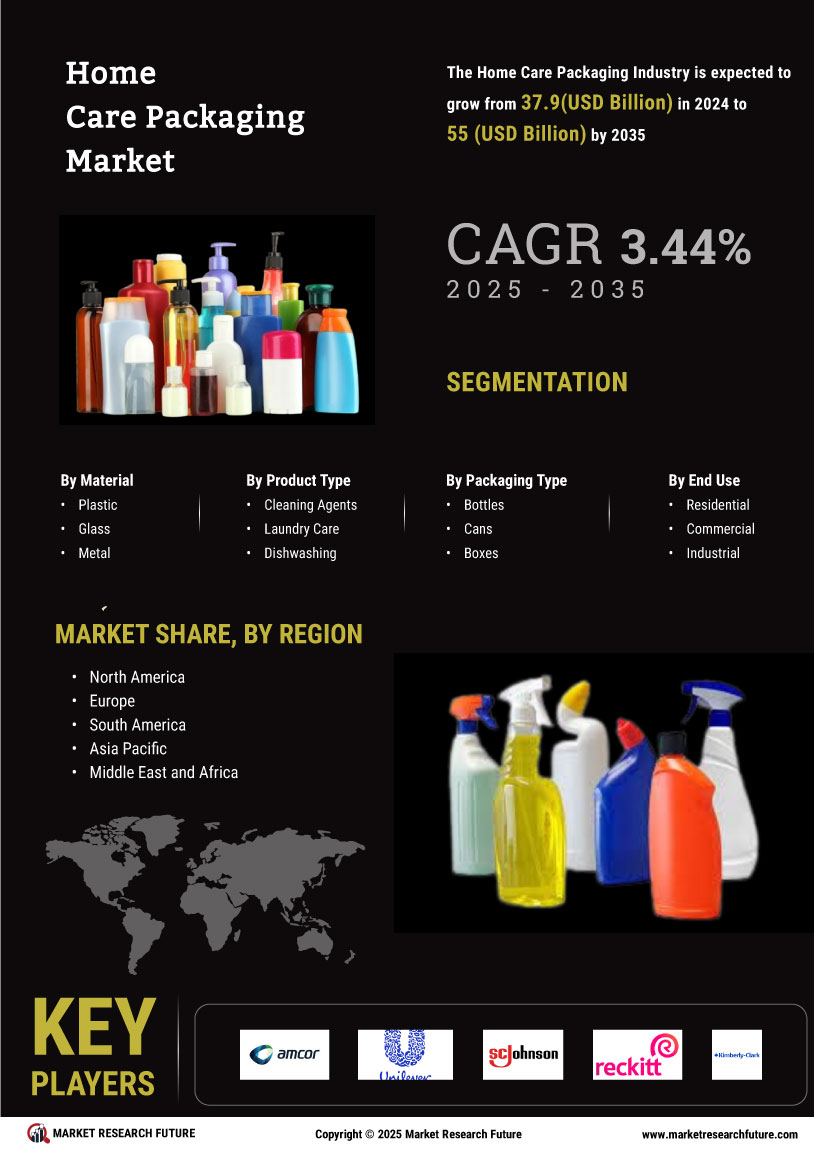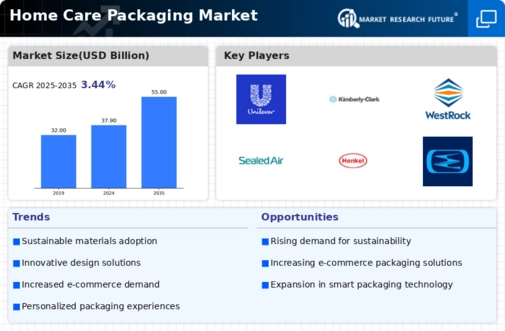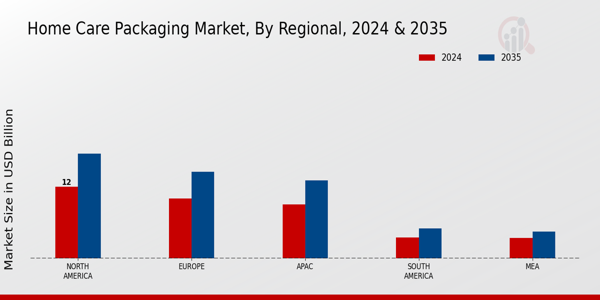E-commerce Growth
The rise of e-commerce significantly impacts the Global Home Care Packaging Market Industry. With more consumers shopping online, the demand for packaging that ensures product safety during transit has surged. Companies are focusing on developing robust packaging solutions that can withstand shipping challenges while maintaining product integrity. For example, brands are utilizing protective materials and innovative designs to minimize damage during delivery. This trend is expected to contribute to the market's growth, with projections indicating a valuation of 55 USD Billion by 2035. The shift towards online shopping necessitates a reevaluation of packaging strategies to meet evolving consumer expectations.
Regulatory Compliance
Regulatory compliance is a significant driver in the Global Home Care Packaging Market Industry. Governments worldwide are implementing stringent regulations regarding packaging materials and waste management. Companies must adapt their packaging strategies to comply with these regulations, which often emphasize recyclability and reduced environmental impact. Failure to meet these standards can result in penalties and damage to brand reputation. As a result, businesses are investing in research and development to create compliant packaging solutions. This focus on regulatory adherence not only mitigates risks but also positions companies favorably in a market increasingly driven by sustainability and environmental responsibility.
Market Growth Projections
The Global Home Care Packaging Market Industry is poised for substantial growth in the coming years. With a projected market value of 37.9 USD Billion in 2024, the industry is expected to expand significantly, reaching an estimated 55 USD Billion by 2035. This growth trajectory suggests a compound annual growth rate of 3.44% from 2025 to 2035. Factors contributing to this expansion include rising consumer awareness of environmental issues, technological innovations, and the increasing demand for convenience-driven packaging solutions. As the market evolves, stakeholders must remain agile to capitalize on emerging trends and consumer preferences.
Sustainability Initiatives
The Global Home Care Packaging Market Industry is increasingly influenced by sustainability initiatives. As consumers become more environmentally conscious, there is a growing demand for eco-friendly packaging solutions. Companies are adopting biodegradable materials and recyclable designs to reduce their carbon footprint. For instance, major brands are transitioning to plant-based plastics, which are projected to account for a significant portion of packaging materials by 2035. This shift not only meets consumer expectations but also aligns with global regulations aimed at reducing plastic waste. The industry's commitment to sustainability is expected to drive growth, contributing to the market's valuation of 37.9 USD Billion in 2024.
Technological Advancements
Technological advancements play a crucial role in shaping the Global Home Care Packaging Market Industry. Innovations such as smart packaging, which incorporates QR codes and NFC technology, enhance consumer engagement and provide valuable product information. These technologies allow brands to connect with consumers in real-time, offering insights into product usage and sustainability practices. Furthermore, automation in packaging processes improves efficiency and reduces production costs. As companies invest in these technologies, the market is likely to experience a compound annual growth rate of 3.44% from 2025 to 2035, reflecting the industry's adaptation to modern consumer demands.
Consumer Preferences for Convenience
Consumer preferences for convenience are reshaping the Global Home Care Packaging Market Industry. As lifestyles become busier, there is an increasing demand for packaging that offers ease of use and functionality. Products with features such as resealable closures, easy-pour spouts, and single-use packaging are gaining popularity. These innovations not only enhance user experience but also cater to the needs of on-the-go consumers. Brands that prioritize convenience in their packaging design are likely to capture a larger market share. This trend is indicative of a broader shift towards consumer-centric packaging solutions that align with modern living.













